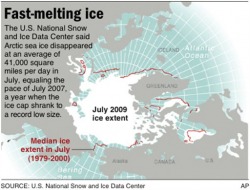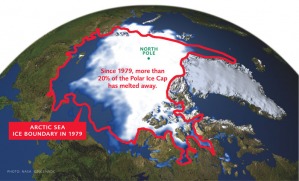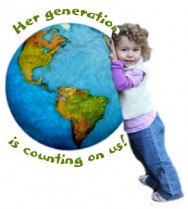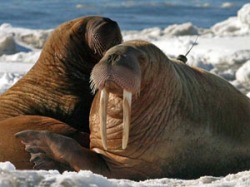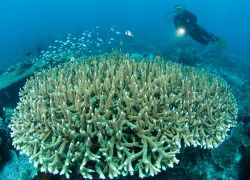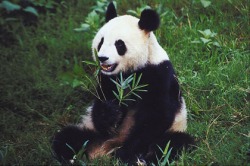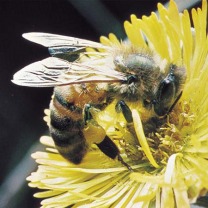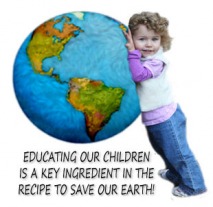It's Good 2 Live Green
Living Green is an excellent way to give back. Choosing to live green helps give back to the earth, animals, and future generations. Going green is actually an excellent way to give back to yourself and your budget as well. There are many free ways that you can contribute to green living without spending any money. Here are a few examples:
Free Ways 2 Go Green:
- Turn of lights a room that no one is occupying. If possible light the room with natural lighting.
- Wash your clothes in cold water.
- Run your clothing dryer only long enough to dry the clothes. Not only will this save energy it will help with static cling that is associated with over drying.
- Turn of the dry cycle of your dishwasher.
- Catch Rain water to water your garden.
- Use washable rags to clean with instead of paper towels.
- Take a shower instead of a bath, and keep showers short.
- Reduce, Reuse, Recycle
Please feel free to take this poll.
If your answer is other please type your answer in the box.
-Thank you
If your answer is other please type your answer in the box.
-Thank you
For years many people have disregarded the reality of how serious global warming is, and could be. Some people think the predictions and theories about global warming are nonsense, pure make believe. A story made up for marketing and politics. Well, that way of thinking could be the very reason that the effects of global warming are happening so much faster then scientists ever expected. We must look at the facts and what science, and research is telling us. Will the world end violently in the year 2012? No, probably not. Will the world end ever? No, the reality of it is, the world will probably never end. But, it is very possible that a good portion of the inhabitants on the Earth could end. To bad we will not be able to tell our Great, Great, Great, Grandchildren that we are sorry for killing their future environment.
About 40 percent of the ice that usually blankets the top of the world during the summer will be gone by 2050, according to a new analysis. Earlier studies had predicted it would be nearly a century before that much ice vanished.
Scientists blame the rapid melt on a combination of natural weather fluctuations and global warming. But over the next few decades, the effects of global warming will dominate in the region, Overland said. And because greenhouse gases linger in the atmosphere for up to five decades, the melting will intensify even if emissions from cars, power plants and industries are slashed dramatically.
Scientists blame the rapid melt on a combination of natural weather fluctuations and global warming. But over the next few decades, the effects of global warming will dominate in the region, Overland said. And because greenhouse gases linger in the atmosphere for up to five decades, the melting will intensify even if emissions from cars, power plants and industries are slashed dramatically.
Source: The Seattle Times
Photo Source: NASA
Average temperatures in the Arctic region are rising twice as fast as they are elsewhere in the world. Arctic ice is getting thinner, melting and rupturing. For example, the largest single block of ice in the Arctic, the Ward Hunt Ice Shelf, had been around for 3,000 years before it started cracking in 2000. Within two years it had split all the way through and is now breaking into pieces.
The polar ice cap as a whole is shrinking. Images from NASA satellites show that the area of permanent ice cover is contracting at a rate of 9 percent each decade. If this trend continues, summers in the Arctic could become ice-free by the end of the century.
Source: Natural Resources Defense Council
The polar ice cap as a whole is shrinking. Images from NASA satellites show that the area of permanent ice cover is contracting at a rate of 9 percent each decade. If this trend continues, summers in the Arctic could become ice-free by the end of the century.
Source: Natural Resources Defense Council
The effects of global climate change is another element of concern. The extent and thickness of the pack ice has reached unusually low levels in several recent years. The walrus relies on this ice while giving birth and aggregating in the reproductive period. Thinner pack ice over the Bering Sea has reduced the amount of resting habitat near optimal feeding grounds. This more widely separates lactating females from their calves, increasing nutritional stress for the young and lower reproductive rates. Reduced coastal sea ice has also been implicated in the increase of stampeding deaths crowding the shorelines of the Chukchi Sea between eastern Russia and western Alaska.
Source: Wikipedia
Source: Wikipedia
General estimates show approximately 10% world's coral reefs are already dead.
It is estimated that about 60% of the world's reefs are at risk due to destructive, human-related activities. The threat to the health of reefs is particularly strong in Southeast Asia, where an enormous 80% of reefs are considered endangered.
Source: Wikipedia
It is estimated that about 60% of the world's reefs are at risk due to destructive, human-related activities. The threat to the health of reefs is particularly strong in Southeast Asia, where an enormous 80% of reefs are considered endangered.
Source: Wikipedia
The IUCN now lists global warming as the most significant threat to the polar bear, primarily because the melting of its sea ice habitat reduces its ability to find sufficient food. The IUCN states, "If climatic trends continue polar bears may become extirpated from most of their range within 100 years." On May 14, 2008, the United States Department of the Interior listed the polar bear as a threatened species under the Endangered Species Act.
The polar bear tends to frequent areas where sea ice meets water, such as polynyas and leads (temporary stretches of open water in Arctic ice), to hunt the seals that make up most of its diet.Polar bears are therefore found primarily along the perimeter of the polar ice pack, rather than in the Polar Basin close to the North Pole where the density of seals is low.
Source: Wikipedia
The polar bear tends to frequent areas where sea ice meets water, such as polynyas and leads (temporary stretches of open water in Arctic ice), to hunt the seals that make up most of its diet.Polar bears are therefore found primarily along the perimeter of the polar ice pack, rather than in the Polar Basin close to the North Pole where the density of seals is low.
Source: Wikipedia
Both species of gorilla are endangered, and have been subject to intense poaching for a long time. Threats to gorilla survival include habitat destruction and the bushmeat trade. In 2004 a population of several hundred gorillas in the Odzala National Park, Republic of Congo was essentially wiped out by the Ebola virus. A 2006 study published in Science concluded that more than 5,000 gorillas may have died in recent outbreaks of the Ebola virus in central Africa. The researchers indicated that in conjunction with commercial hunting of these apes, the virus creates "a recipe for rapid ecological extinction.
Source: wikipedia
Source: wikipedia
The Giant Panda is an endangered species, threatened by continued habitat loss and by a very low birthrate, both in the wild and in captivity.
The Giant Panda has been a target for poaching by locals since ancient times, and by foreigners since it was introduced to the West. Starting in the 1930s, foreigners were unable to poach Giant Pandas in China because of the Second Sino-Japanese War and the Chinese Civil War, but pandas remained a source of soft furs for the locals. The population boom in China after 1949 created stress on the pandas' habitat, and the subsequent famines led to the increased hunting of wildlife, including pandas. During the Cultural Revolution, all studies and conservation activities on the pandas were stopped. After the Chinese economic reform, demand for panda skins from Hong Kong and Japan led to illegal poaching for the black market, acts generally ignored by the local officials at the time.
Source: Wikipedia
Of the nine subspecies of modern tiger, three are extinct and the remaining six are classified as endangered, some critically so. Poaching, habitat destruction and inbreeding depression continue to be threats to the tiger.
Source: Wikipedia
Source: Wikipedia
Click Icon above to Save The Big Cat Habitat for free with a click threw Care2 and
Defenders of Wildlife.
Click Here to go to the Click 2 Give page on this site to see other ways to give with a click.
Defenders of Wildlife.
Click Here to go to the Click 2 Give page on this site to see other ways to give with a click.
Beekeepers in Western countries have been reporting slow declines of stocks for many years, apparently due to changes in agricultural practice and unpredictable weather caused by climate change. In early 2007, abnormally high die-offs (30-70% of hives) of European honey bee colonies occurred in the U.S. and Quebec such a decline seems unprecedented in recent history. This has been dubbed "Colony Collapse Disorder" (CCD)
Source: Wikipedia
Source: Wikipedia
Click Icon Above to Go Home


